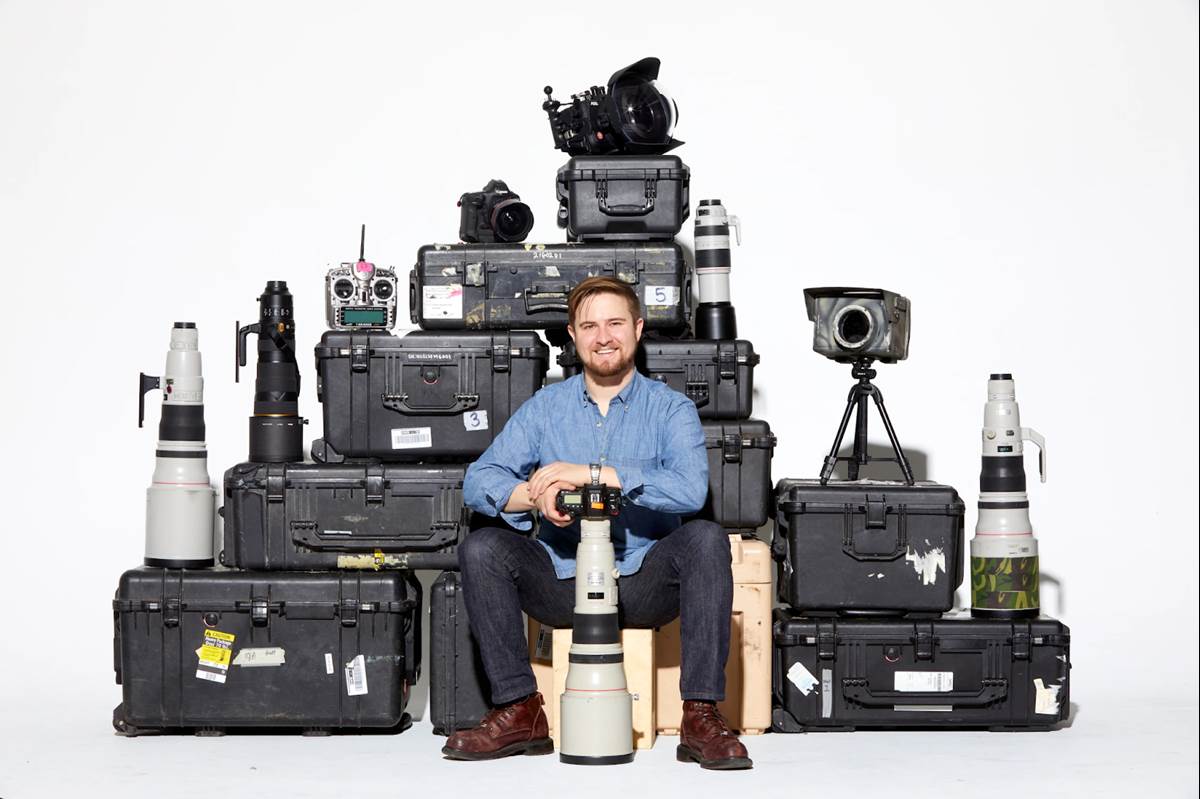The Photo Engineer Behind Some of National Geographic’s Most Ingenious Devices is Highlighted in New Podcast Episode
How does National Geographic capture such incredible wildlife images, ones that seem impossible to achieve? The answer is “The Real-Life MacGyver in Nat Geo’s Basement”, Tom O’Brien. In this week’s new episode of Overheard at National Geographic, Peter Gwin talks with the photo engineer about some of his amazing inventions, including one that hasn’t been put to use yet.

(National Geographic/Rebecca Hale)
Literally in the basement of National Geographic’s headquarters, Tom’s engineering lab is full of gadgets he’s designed. Gwin refers to himi as “The secret sauce behind some of National Geographic’s most surprising and iconic images.” Like Harold Edgerton, who pioneered underwater photography for Jacques Cousteau, Tom O’Brien continues a legacy of achieving the impossible with his customized cameras, including three he created for the Oscar-winning film Free Solo so that Alex Honnold could scale El Capitan without cameras in his face.
The episode highlights three different devices, two that have already been used and one that is waiting for its turn in the field. The “Wolf Camera Trap” was placed inside a carcass, with stainless steel protecting all the cables, to capture footage from the kill’s point of view as arctic wolves shared a meal.
The comically named “Funky Bird Train” was designed to film the mating dance of sage grouse, a North American great plains bird that won’t perform their unique mating dance if humans are present. A remote control camera train was required and Tom created 3D-printed railroad ties with a custom-made aluminum RC-controlled camera cart that could ride on it. A papier-mâché sage grouse covered the contraption, making the birds feel like they weren’t being observed by another animal.
Tom’s most recent invention is called the “Beaverlution.” Photographer Ronan Donovan wants to capture how beavers store food under ice water in the winter, an act that’s never been photographed before. A camera was needed that could withstand the ice cold water, hang from the ice underwater, and include lighting and controls. And the request came with just one month’s notice.
With a quick turnaround, the solution comes from retrofitting an off-the-shelf underwater camera housing device. After stabilizing the housing, Tom made a metal frame that would allow it to hang underwater off the ice, looking something like a swingset for a camera. Welding, milling, and cutting were all required on this project, including the use of a plasma cutter. The end result of all this work will likely be a single photo that gets published in National Geographic magazine. But as photo editor Kaya Berne reveals in the podcast, good quality photos of beavers are rare, so perhaps the Beaverlution will get more use than Tom realizes.
The urgent need for the Beaverlution was delayed due to ice melting before the photographer could get into the field. It turns out to be a blessing for Tom, who doesn’t like to rush projects and can now take the time to fine tune the customized device to make sure it works perfectly on its big day. Until then, it’s another one of the many unique devices that fill the basement office of Tom O’Brien. “Every day is exciting and you never know what screwball thing some photographer or visual journalist is going to come up with next,” he says at the end of the episode.
You can listen to this full episode and others at the official Overheard at National Geographic website.
